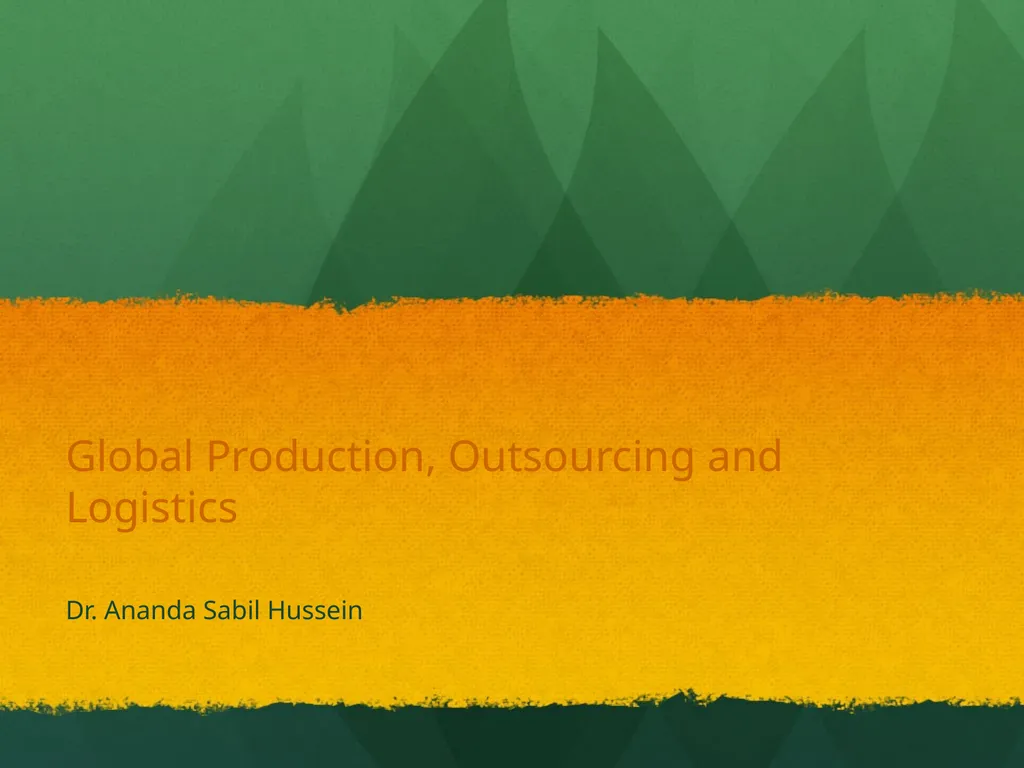Global Production, Outsourcing and Logistics Dr.
Author : celsa-spraggs | Published Date : 2025-05-24
Description: Global Production Outsourcing and Logistics Dr Ananda Sabil Hussein Introduction International firms must answer five interrelated questions 1 Where should production activities be located 2 What should be the longterm strategic role
Presentation Embed Code
Download Presentation
Download
Presentation The PPT/PDF document
"Global Production, Outsourcing and Logistics Dr." is the property of its rightful owner.
Permission is granted to download and print the materials on this website for personal, non-commercial use only,
and to display it on your personal computer provided you do not modify the materials and that you retain all
copyright notices contained in the materials. By downloading content from our website, you accept the terms of
this agreement.
Transcript:Global Production, Outsourcing and Logistics Dr.:
Global Production, Outsourcing and Logistics Dr. Ananda Sabil Hussein Introduction International firms must answer five interrelated questions: 1. Where should production activities be located? 2. What should be the long-term strategic role of foreign production sites? 3. Should the firm own foreign production activities, or is it better to outsource those activities to independent vendors? 4. How should a globally dispersed supply chain be managed, and what is the role of Internet-based information technology in the management of global logistics? 5. Should the firm manage global logistics itself, or should it outsource the management to enterprises that specialize in this activity? Strategy, Production, And Logistics Firms need to identify how production and logistics can be conducted internationally to: lower the costs of value creation add value by better serving customer needs Production refers to activities involved in creating a product Logistics refers to the procurement and physical transmission of material through the supply chain, from suppliers to customers Strategy, Production, And Logistics To lower costs, firms can: disperse production to those locations where activities can be performed most efficiently manage the global supply chain efficiently to better match supply and demand To improve quality, firms can: eliminate defective products from the supply chain and the manufacturing process Improved quality will also reduce costs Strategy, Production, And Logistics To increase product quality, most firms today use the Six Sigma program which aims to reduce defects, boost productivity, eliminate waste, and cut costs throughout a company Six Sigma, a direct descendant of total quality management (TQM), has a goal of improving product quality In the European Union, firms must meet the standards set forth by ISO 9000 before the firm is allowed access to the European marketplace Strategy, Production, And Logistics International companies have two other important production and logistics objectives: production and logistics functions must be able to accommodate demands for local responsiveness production and logistics must be able to respond quickly to shifts in customer demand Where To Produce Three factors are important when making location decisions: 1. country factors 2. technological factors 3. product factors Country Factors Firms should locate manufacturing activities in those locations where economic, political, and cultural conditions, including relative factor costs, are most conducive to the performance of that activity Country factors that can affect location decisions include: the availability of skilled labor and supporting industries formal and informal trade barriers expectations about future exchange














